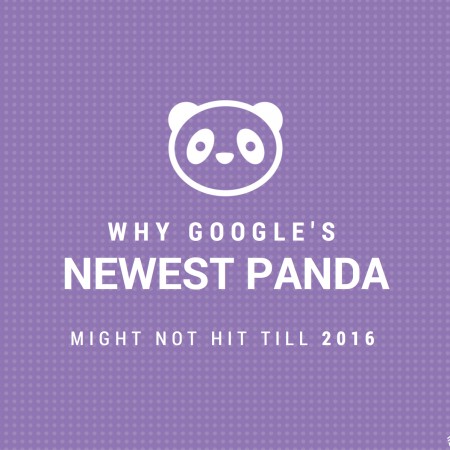Google Has Increased Meta Description Snippet Length: What It Means, Plus What to Do Next
No, your eyes are not deceiving you. Meta descriptions in Google search results ARE longer. These descriptions show up right underneath the link to each search result. Google calls them “snippets,” and they’re a big deal. We’ll go more into defining how it’s a “big deal” soon, but here’s a look at the old length vs. the new: The change in meta length just happened across the last month of 2017 (less than a month ago). Here’s a chart from RankRanger showing the SERP changes: So, first, why do Google meta descriptions matter so much? They are instrumental in describing the page that’s linked. Reading the snippet can thus help searchers understand whether the search result is relevant to what they need. If the meta description is optimizing, clear on what to expect from the content, AND enticing (SEO, clarity, creativity), you’re more likely to click on it. The click-through on the organic ranking gets higher. That’s a lot to do in one meta. You can see why great meta descriptions are so important. Here at EW, we write meta descriptions all the time for our clients. It’s a fine art, because you have to cram the essence of what a page is about into a limited amount of characters. Then, you have to make it sound awesome. With the character limit increased, this gives us a little more room to be creative and really speak to the reader. In turn, this gives you a higher chance of getting clicks and conversions for your content. Let’s discuss the change, including exactly when it happened, and why this is great news for your business. Why Google Upped the Character Limit for Meta Description Snippets Search Engine Land was able to confirm the meta description change with Google in December. Here’s what Google said: “We recently made a change to provide more descriptive and useful snippets, to help people better understand how pages are relevant to their searches. This resulted in snippets becoming slightly longer, on average.” The snippets grew from around 160 characters to an average of 230 characters. The official maximum character count allowed is now 320. Why Does the Change Matter? When you’re trying to write a description of a page for the search results, double the amount of space makes a huge difference. Let’s be clear, though: The meta description has no effect on your page ranking. This was true before and it’s true now. Instead, this snippet of descriptive text is for users, for their benefit. As we said, the snippet could make a user want to click on your page in search results over a competing page. It may sound more tempting because it’s a better description, it’s persuasive, or both. That said, Google won’t always use your meta description in the snippet. Depending on the user’s search query, the search engine may instead pull snippets of content from your page. John Mueller goes into this in detail on a recording of a Google Hangout that streamed on December 12, soon after the changes occurred. This topic starts up at about the 29:41 mark: Here’s the tldr; – Meta descriptions are important to get right. They help describe your pages for users. Google will sometimes (but not always) pull your meta description to use in the snippet that shows up with your link in search results. Google will pull your meta description if they think it’s a more accurate or relevant summary than any text they could pull from your content. If your description is accurate, relevant, concise, and well-written, you may have a better chance of nabbing click-throughs. Most importantly, Google still recommends including a meta description on each page of your site. Google highlights the importance of high-quality descriptions, specifically: Besides the benefit to you when you create good descriptions for each of your web pages, it’s simply a good usability practice to follow. What to Do Moving Forward You get that you should be creating unique, high-quality meta descriptions for each of your pages on your site. But what about the descriptions you already have in place? Should you go back and lengthen them just because you can? Not necessarily. Don’t Lengthen Old Descriptions – Unless They’re Critical Pages According to Google, they’re still looking for relevance and conciseness when they consider text to use in snippets. Lengthening your meta descriptions won’t necessarily make them better in either of these areas. Instead, think of this change as a chance to make your meta descriptions going forward even better. You have a little more wiggle room for creativity and persuasiveness to sprinkle into a highly relevant summary of your page. One exception would be critical pages of your site – the most important content pieces, landing pages, etc. that get the most search traffic. Moz, in particular, recommends going back to these and reoptimizing the meta descriptions. Don’t just lengthen them though – rewrite them with the new limits in mind. You may come up with something completely different, but even better than before. What Are Best Practices for Meta Description Creation? For meta descriptions, striking the balance between appealing to users and still giving a great summary can be tricky. Because it can be an art form, here are some best practices to follow to help guide you: Always include the focus keyword and the top secondary keyword in the description. This helps establish relevance right off the bat. Use the focus keyword as early in the description as possible. Use action-oriented words to describe the benefits to users if they click on your page. For example, start with words like “discover,” “find,” or “explore” – i.e. “Discover how to write fantastic meta descriptions.” Of course, this is just a primer on writing meta descriptions. Great ones don’t always follow a formula, but they do accurately entice readers with hints about what’s waiting for them when they follow a link. Not a Meta Description Wizard? No Worries If creating snazzy meta descriptions … Read more


